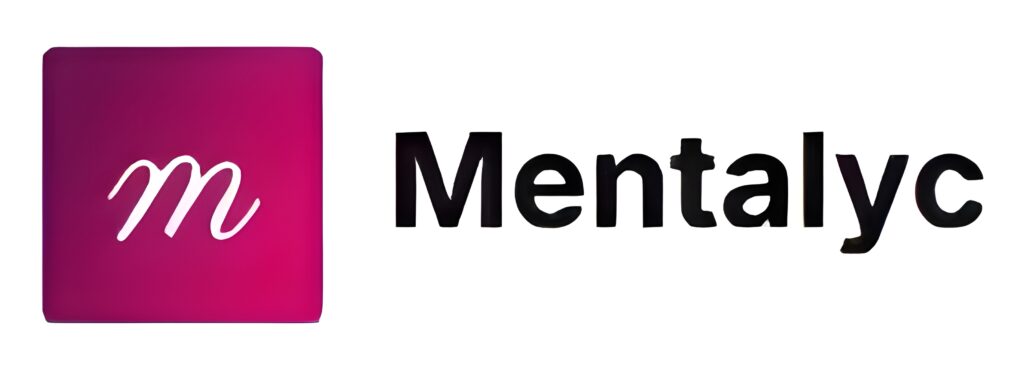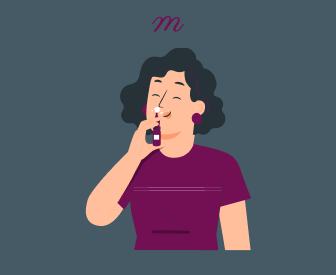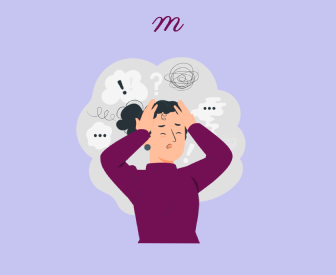Have your progress notes written for you automatically
The term ‘Substance Use Disorder’ has become a buzzword on social media. From influencers to laymen, people attribute Substance Use disorder to mean different things.
However, The Diagnostic and Statistical Manual of Mental Disorders, Fifth Edition (DSM-5), categorically highlights that a substance use disorder is a combination of several symptoms which affect thinking or reasoning, behavior and also the normal function of the body. Another important feature is that the individual with the disorder continues to use the substance despite negative effects that are related to the substance use.
DSM 5 Classification of Substance Use Disorder (SUD)
Substance use disorders belong to the family of substance-related disorders. In this family, there is another class of disorders known as substance-induced disorders.
Substance related disorders involve the use of ten major classes of drugs. They include opioids, inhalants, hallucinogens, sedatives/ hypnotics/anxiolytics, stimulants, tobacco, alcohol, cannabis, caffeine and others (unknown substances). Don’t get too worked up on these classes; even the DSM 5 acknowledges that these 10 classes are not completely distinct.
However, they all have something in common – when these drugs are abused, they affect the reward system in the brain and further reinforce patterns of behavior. They activate the brain’s reward system so much that the individual using them may neglect other beneficial activities in favor of substance use.
Prevalence of Substance Use Disorder
According to the World Health Organization (WHO), every year, 3.3 million people die from Substance Abuse, and more than 15 million people have drug use disorders.
More disturbing is the fact that a lot of people are exposed to these substances from when they are kids. According to the National Center for Drug Abuse statistics, more than 50% of people who are 12 years and above have been exposed to illegal drugs at least once.
This finding is very close to what the American Addiction Centers also reported, stating that more than 48 million Americans from age 12 upwards struggled with a substance use disorder over the last twelve months.
I recall counseling a 16-year-old boy who had been introduced to drugs by his friends in high school. These friends had been also exposed to it by their uncles who came home to visit.
I sat there seeing his mother struggle to fight back tears as she listened to her son who eventually needed to be on admission because he could no longer be managed at home. His mother later told me she was heartbroken and had been fighting depression since he was diagnosed.
Just look at how one mental disorder can lead to another mental disorder in one family!
This is a big deal and can lead to a national crisis on our hands!
Causes of Substance Use Disorder
Like many other mental disorders, substance use disorder is not attributed to just one cause. Several factors can contribute to its occurrence:
- Genetics: Studies show that genes may contribute to the development of SUD in people. So, a family history of substance abuse may be a risk factor for developing Substance Use disorder. This does not mean that once there is substance abuse in your family, you are doomed. Rather it means there may be a genetic predisposition. But this isn’t enough to on its own lead to substance use disorder.
- Environment: Your environment can also increase the risk of substance use disorder. Parental abuse, substance use disorder in parents, peer influence and poor grades in school can also contribute to the development of SUD.
- Age: Adolescents, and youths, who are more inquisitive and willing to try out new things have a higher risk of substance use. Many times these adolescents just wanted to have a feel of the substance or were just exploring. And before they knew what was happening, they became hooked.
- Mental Health Disorders: People who have other mental health disorders may resort to substance use to ‘cope’ with their conditions, or to escape the reality of the mental condition they are living with.
Types of Substance Use Disorder (SUD) According to DSM-5 diagnostic Criteria
According to DSM V, the types of substance use disorders include:
- Opioid Use Disorder
- Alcohol Use Disorder
- Cannabis Use Disorder
- Stimulant Use Disorder (Also includes Amphetamine-type disorders)
- Inhalants Use Disorder
- Hallucinogens Use disorder
- Sedatives (hypnotics, anxiolytics) use disorder
- Tobacco use disorder
- Other (or unknown) use disorders
DSM-5 Diagnostic Criteria for Substance Use Disorder
Making a diagnosis of Substance use disorder on its own can affect the life of an individual and their loved ones. So making the right diagnosis is key.
DSM V has put forward 11 criteria that can arise as a result of substance use disorder.
These criteria are grouped into 4 major categories:
- Impaired Control
- Social Impairment
- Risky Use
- Pharmacological Criteria
Impaired Control (Criteria 1 – 4)
- The individual takes the substance in greater amounts and over a longer period than was their intention. For most people, they tell you they never wanted to go beyond the first use, or maybe just a few doses for a few days to deal with a situation. But before then they used beyond the amount and the time they planned.
- The individual has expressed a persistent desire to stop or reduce the intake of the substance and may even report several unsuccessful attempts to stop or reduce its use.
- The individual spends a lot of time getting the substance, using the substance or in recovery from the effects of using the substance. Sometimes almost all the activities of the person are tied to the substance.
- Craving – This is demonstrated by a strong or intense desire for the substance. This craving may occur randomly but has a higher chance of occurring when the individual is in an environment where the drug was obtained or used previously.
Social Impairment (5 – 7)
- As a result of recurrent use of substances, individuals may fail to meet obligations at their place of work, school or home.
- Despite persistent problems in interpersonal relationships and social life, the individual may persist in the use of the substance.
- The person may stop engaging in important social and recreational activities. They might even withdraw from family events and activities just to use the substance.
Risky Use of Substance
- The Individual keeps using the substance even in situations that are physically dangerous.
- The individual continues to use the substance despite being aware that the substance has caused or is worsening a mental or physical problem. So, the individual is aware of the problem the substance is causing or making worse, but still fails to stop using it.
Pharmacological Criteria
- Tolerance: This refers to the need to take higher doses of the substance to achieve the same or lower effect of the usual dose. The rate and degree that tolerance develops varies among individuals. Tolerance may not be easily established from the history of the client alone. A healthcare professional may need laboratory tests and results together with history and examination to determine that an individual has developed tolerance.
- Withdrawal: Withdrawal is a combination of symptoms that happen when there is a drop in the concentration of the substance in a person’s blood. It happens when a person has been previously using a high dose of the substance.
A person experiencing withdrawal would most likely consume more of the substance to relieve these symptoms.
Withdrawal manifests in different forms depending on the substance that is used. But changes in the physical functioning of the body are commonly seen in the use of alcohol, sedatives, anxiolytics, hypnotics and opioids.
These symptoms are present but less obvious in the use of tobacco, stimulants and cannabis. These symptoms have not been demonstrated in Phencyclidine, other hallucinogens and inhalants.
Now, you should know that these last two criteria – tolerance and withdrawal are not necessary to make a diagnosis of substance use disorder. But when they are present, they usually imply that the disorder is severe.
Another important factor is when individuals experience symptoms of tolerance and withdrawal during medical treatment with prescribed medications. It is not used to make a diagnosis of substance use disorder. A diagnosis of substance use disorder can be made when a client meets at least 2 out of the 11 criteria over a period of 12 months.
Levels of Severity
According to the DSM 5, The severity of substance use disorder is graded based on the number of criteria present in the patient.
- Mild substance use disorder: 2 – 3 Symptoms
- Moderate substance use disorder: 4 – 5 Symptoms
- Severe substance use disorder: 6 or more symptoms.
Other Substance-Related Disorders Not Listed In The Dsm-5
- Caffeine use Disorder is not included as a substance use disorder in the DSM V. Further research would be needed to determine the extent of its clinical significance.
- Addiction is not listed as a condition in the DSM V. This is because the term has a vague definition and a negative undertone. Instead, the DSM V used the term ‘Substance Use Disorder’ and then gave different levels of severity from mild to severe. Most people use the term ‘addiction’ to refer to a severe form of habitual and compulsive substance use. So, the DSM V levels of severity have already taken care of it.
Treatment of Substance Use Disorder (SUD)
Treatment and recovery in SUD may involve medications and other forms of therapy. The specific therapy and drug abuse treatment plan used would be determined by the type of substance use disorder.
Medications may include Methadone, Naltrexone and Buprenorphine which can be used to treat withdrawal symptoms in Opioid disorder.
Other forms of treatment include detoxification (if required), outpatient counseling, support groups, and individual and family psychotherapy.
Treatment may also involve addressing the root causes or removing the exposure in the environment that led to or contributed to the development of the substance use disorder.
Conclusion
Substance Use Disorder can happen to anyone. People with this diagnosis should not be stigmatized or isolated as this would make matters worse. Rather, they need a supportive community that can help them overcome the condition.
If you have observed any symptoms in you or your loved ones, then you should reach out to a mental healthcare professional for guidance and help.
Parents and students should also be educated about the menace of substance use and how it can affect their lives. Individuals on opioids or similar medication should not take beyond what is required. They should not share their prescription with anyone and should also be mindful of how they keep their leftover drugs.
Parents should not expose their kids to substances and prevent other adults with compromising character from getting too close to their kids. Health campaigns against SUD in families, communities and schools should be organized to talk about this and help those who are already involved.
Frequently Asked Questions (FAQS)
How is Substance Use DisorderSUD diagnosed?
Substance Use Disorder (SUD) is diagnosed using the 11 criteria put forward by DSM 5. A person needs to meet 2 of the 11 criteria over a period of 12 months to be diagnosed with SUD.
What is the cost of SUD treatment?
The cost of treating substance use disorder and rehabilitation varies across health centers. You can ask your healthcare provider.
What is Substance Use?
Substance Use refers to the use of substances such as alcohol, inhalants, tobacco, and opioids by ingesting, inhaling, or injecting them into the body, with a possibility of dependence and other negative effects.
How Quickly Can I Become Addicted To A Drug?
The possibility of getting addicted and how quickly you get addicted to any drug depends on a combination of several factors like your genetic composition, your age, the type of drug. It is advisable to stay away from these substances.
How Can I Help Someone With Substance Use Disorder?
Listen to them without passing judgment or accusing them. Tell them that it is possible to overcome the condition. Refer them to a mental health therapist or healthcare provider so they can be properly managed. Encourage them to seek help early.
Disclaimer
All examples of mental health documentation are fictional and for informational purposes only.










